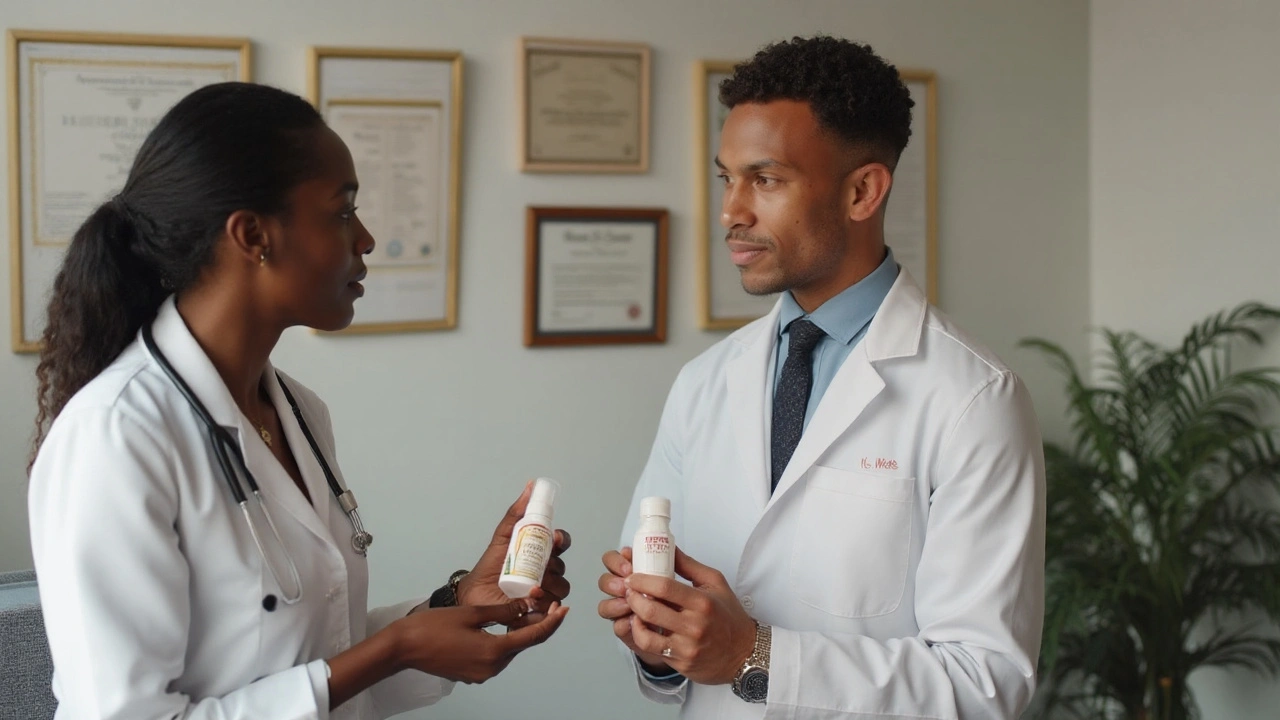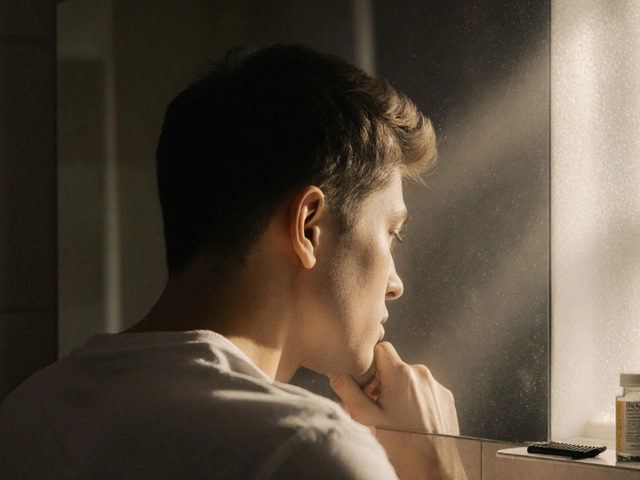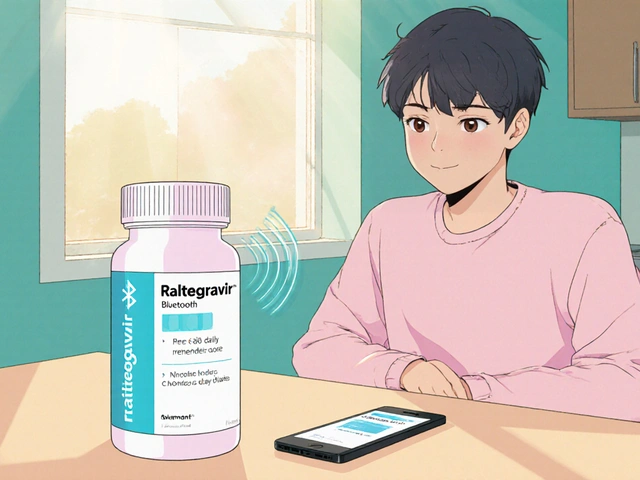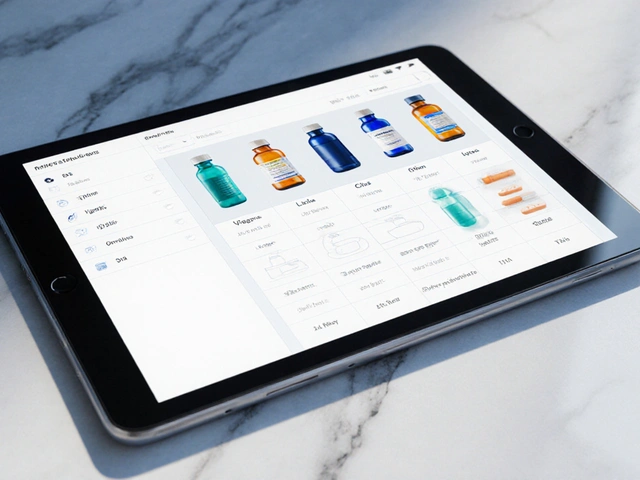Those pale or coffee-brown patches that won’t tan with the rest of your skin? That’s often tinea versicolor (a Malassezia yeast issue), and it loves humid summers and sweaty workouts. Antifungals clear it, but relapse is common. So where do probiotics fit-can they prevent it coming back or even help treat the discoloration? Here’s the short truth: probiotics can support your skin’s defenses and may cut relapse risk for some fungal problems, but they don’t replace antifungals for active patches. I live in Melbourne and see this spike every warm spell; the game is prevention and smart maintenance, not magic bullets.
TL;DR: What probiotics can-and can’t-do for fungal discoloration
probiotics for tinea versicolor won’t reliably clear active discolored patches. You still need an antifungal to kill the yeast. Where probiotics help is the gap between treatments-supporting your skin barrier, nudging the immune response toward balance, and possibly reducing recurrences of yeast-related skin issues like dandruff (seborrheic dermatitis) and candidal rashes. Expect modest benefits, not miracles.
- Use antifungal washes or creams first to treat visible patches; probiotics are an add-on, mainly for relapse prevention.
- Best signal so far: seborrheic dermatitis (dandruff) and Candida-prone areas; the evidence for tinea versicolor itself is limited but biologically plausible.
- Oral strains often used: Lactobacillus rhamnosus GG, L. paracasei, L. reuteri, Bifidobacterium lactis; for Candida-prone folks, Saccharomyces boulardii has supportive data.
- Timeframe: give it 8-12 weeks; continue antifungal maintenance during hot, humid months.
- Safety: generally good, but avoid live probiotics if you’re severely immunocompromised or have central lines; check with your doctor first.
Evidence snapshot and credibility: Current dermatology guidance (AAD patient education 2023; BMJ Best Practice 2024) treats probiotics as optional adjuncts, not primary therapy. Cochrane reviews show probiotics can help reduce Candida colonisation in certain settings (like oral or vaginal Candida), but direct, high-quality trials in tinea versicolor are scarce. Reviews in Frontiers in Microbiology (2022) and Mycoses (2021) explain the skin-microbiome-fungus story but stress uncertainty. So, act like a pragmatist: use antifungals to clear, then consider probiotics to support the off-season.
How to use probiotics safely alongside antifungals to prevent relapse
Start simple: clear what you can see, then maintain what you can’t. Here’s a practical flow that works in the real world.
- Confirm it’s actually a fungal cause. Tinea versicolor shows fine scale when you scratch the surface. Doctors often spot it on sight; sometimes they’ll use a Wood’s lamp or a quick skin scraping. If patches are stark white with no scale (think vitiligo) or you’ve got inflamed borders (ringworm), you need precise diagnosis before you self-treat.
- Clear the active patches with standard antifungals. For tinea versicolor, common first-line options are ketoconazole 2% shampoo or selenium sulfide 2.5% lotion as a body wash (leave on 5-10 minutes, then rinse) for 1-2 weeks. Creams with azoles (clotrimazole, miconazole) can help small areas. Severe or stubborn cases sometimes need oral itraconazole or fluconazole prescribed by a clinician. This follows mainstream dermatology guidance (AAD 2023; BMJ Best Practice 2024). In Australia, check the pack labels and TGA status; many washes are over-the-counter, while oral medicines are prescription-only.
- Add an oral probiotic during and after clearance. Look for clear strain IDs and doses. A common daily target is 10-20 billion CFU for mixed Lactobacillus/Bifidobacterium products, taken with food for 8-12 weeks. For patients prone to Candida rashes (under breasts, groin, skin folds), S. boulardii 250-500 mg once or twice daily for 4-8 weeks is often used in clinical practice. The goal isn’t to “kill” skin fungus directly; it’s to reduce conditions that favour overgrowth.
- Consider topical probiotic/postbiotic skincare as a barrier helper. You’ll see moisturisers with ferment lysates (for example, Lactobacillus ferment) and prebiotics (like inulin). These don’t treat fungus, but they can calm irritation and shore up the barrier-useful after antifungal courses. Patch-test any new product.
- Diet that feeds your “good” bugs. Add daily prebiotic fibres (oats, legumes, green bananas), fermented foods (yoghurt with live cultures, kefir, kimchi, sauerkraut), and a plant-heavy plate. Not because “sugar feeds yeast on your skin,” but because a stable gut microbiome nudges systemic inflammation down, which helps the skin do its job.
- Maintenance during trigger seasons. In Melbourne, relapses cluster in spring-summer. Use an antifungal body wash once weekly on high-risk zones (chest, back, neck) for 2-3 months when it gets humid. If you’re very relapse-prone, cycle your oral probiotic for 2 months on, 1 month off across the warm months.
- Sweat-smart habits. Shower soon after heavy sweat, dry skin folds well (cool hairdryer on low works), rotate breathable sportswear, and don’t sleep in damp gear. Choose non-greasy, Malassezia-friendly moisturisers; heavy oils high in oleic acid (like some olive oils) can aggravate yeast-prone skin.
- Know when to get help. If patches spread fast, itch or burn, involve the scalp with severe flaking, or you’re pregnant, diabetic, or immunocompromised, talk to a clinician. Also check in if you see no change after 4 weeks of proper antifungal use-maybe it’s not fungus.
Safety notes: Probiotics are generally safe, but live organisms can occasionally cause issues in high-risk people (central venous catheters, severe immunosuppression). S. boulardii is a yeast; rare cases of fungemia were reported in hospital settings, almost always with central lines. If that’s you, ask your doctor before starting.

What to try: strains, foods, and routines that fit real life
Here are practical combos that patients actually stick with. Swap in brands you trust; in Australia, look for TGA-listed complementary medicines (the label shows “AUST L”) with strain names and CFU at expiry.
- Summer runner with chest/back patches (classic tinea versicolor).
- Treat: Ketoconazole 2% shampoo as a chest/back wash daily for 7 days, then twice weekly for 3 weeks.
- Add: Oral L. rhamnosus GG (10 billion CFU) + B. lactis (5-10 billion CFU) daily for 8 weeks.
- Maintain: Once-weekly antifungal wash December-February; shower after runs; swap tight synthetics for moisture-wicking shirts; keep a spare top in your gym bag. - Office worker with dandruff plus faint chest patches.
- Treat: Anti-dandruff shampoo (ketoconazole, zinc pyrithione, or selenium sulfide) 3x/week to scalp; use the lather on chest for 5 minutes before rinsing for 2 weeks.
- Add: L. paracasei + L. reuteri blend (10-20 billion CFU) daily for 12 weeks; barrier moisturiser with a ferment lysate at night.
- Maintain: Alternate two different anti-dandruff actives weekly to avoid plateaus; keep scalp and forehead sunscreen non-greasy to limit flare-ups. - Teen with recurrent candidal rash in skin folds.
- Treat: Clotrimazole cream twice daily for 2-4 weeks until fully clear; keep folds dry with a non-medicated drying powder.
- Add: S. boulardii 250 mg twice daily for 4 weeks; fibre-rich snacks (apples, carrots, hummus).
- Maintain: Daily shower after sport, dry thoroughly, breathable underwear, and short “top-up” antifungal courses at first sign of redness.
A quick word on evidence. Dermatology guidelines remain clear: antifungals are the main act for Malassezia disorders (tinea versicolor, seborrheic dermatitis). Small clinical trials and reviews suggest oral Lactobacillus-based probiotics can reduce scalp flaking and itch in seborrheic dermatitis, and S. boulardii/Lactobacillus strains can curb Candida colonisation in the mouth or gut. Direct, high-quality trials for tinea versicolor recurrence with probiotics are limited, so think of them as a reasonable adjunct when relapse is your pain point.
| Condition | Usual culprit | Primary treatment | Adjunct probiotic approach | Evidence strength | Key outcome reported | Typical duration |
|---|---|---|---|---|---|---|
| Tinea versicolor (discoloration) | Malassezia yeast on trunk/neck | Topical azoles/selenium; occasional oral azoles | Oral Lactobacillus/Bifido blends; postbiotic moisturisers | Low-emerging | Biologic plausibility for relapse reduction; no consistent RCTs directed at repigmentation | 8-12 weeks adjunct; long-term seasonal maintenance |
| Seborrheic dermatitis (dandruff) | Malassezia on scalp/face | Anti-dandruff shampoos/creams | Oral L. paracasei/L. reuteri; topical lysates | Moderate (small RCTs) | Reduced flake scores and itch in some trials | 12 weeks |
| Candidal intertrigo | Candida in skin folds | Topical azoles, drying measures | S. boulardii; L. rhamnosus GG | Moderate (for colonisation elsewhere; indirect for skin) | Lower recurrence reported in related Candida sites | 4-8 weeks |
| Post-inflammatory dyspigmentation after fungus | Melanin imbalance after inflammation | Sun protection; time; sometimes azelaic acid | General microbiome support; not targeted | Insufficient | No direct pigment change expected from probiotics | 3-6 months for gradual tone blending |
Sources (named, no links): American Academy of Dermatology patient guidance (2023 update on tinea versicolor and seborrheic dermatitis); BMJ Best Practice: Tinea versicolor (2024); Cochrane Review on probiotics for prevention of oral candidiasis (2019) and vaginal Candida recurrence (2017); Frontiers in Microbiology review of probiotics and the skin microbiome (2022); Mycoses review on Malassezia-associated skin disease (2021).
Cheat-sheets, FAQ, and troubleshooting
Here’s the practical stuff you’ll actually use.
Probiotic shopping checklist (Australia-friendly):
- Strain-level ID on label (e.g., L. rhamnosus GG ATCC 53103), not just species.
- Effective daily dose: aim 10-20 billion CFU for blends; S. boulardii 250-500 mg.
- CFU count listed at end-of-shelf-life, not “at manufacture.”
- Storage: fridge vs shelf-stable-follow the label. Heat kills live bugs.
- Expiry date within range you’ll actually finish.
- TGA listing (AUST L) for complementary medicines and transparent ingredient list.
- Third-party or in-house quality testing stated; minimal fillers; allergen disclosure.
Routine checklist for relapse-prone skin:
- Weekly antifungal wash on chest/back/neck during warm months.
- Shower and dry promptly after sport; cool hairdryer for skin folds.
- Non-greasy sunscreen; avoid heavy oils on yeast-prone zones.
- Probiotic cycle 8-12 weeks leading into summer; fibre and fermented foods daily.
- Photo-check monthly in the same light to track changes.
Rules of thumb:
- If it’s scaly, treat the fungus first. If it’s just lighter/darker with no scale after treatment, that’s pigment lag-time and sun protection help more than anything.
- Relapse rate for tinea versicolor can be high (up to half within a year without maintenance). Think “maintenance,” not “one-and-done.”
- Two levers reduce relapse: regular antifungal wash and consistent, simple sweat hygiene. Probiotics are your third lever.
Mini-FAQ
- Will probiotics repigment my skin? Not directly. Once yeast is gone, pigment usually normalises over weeks to months. Probiotics don’t recolour skin.
- Can I skip antifungals if I take probiotics? No. Use antifungals to clear active patches. Probiotics are an adjunct.
- How long before I notice anything? Aim for 8-12 weeks. You’re looking for fewer flare-ups and milder symptoms, not dramatic overnight changes.
- Any side effects? Gas or bloating early on. Rarely infections in high-risk people. Stop if you feel unwell and talk to your clinician.
- Food vs supplement? Fermented foods support baseline health; supplements deliver consistent strains/doses used in studies. You can do both.
- Which oils are safer on yeast-prone skin? Lighter, non-comedogenic options (squalane, mineral oil, some silicones). Heavy, oleic-acid-rich oils can aggravate.
- Do antibiotics mess with this? Yes-broad-spectrum antibiotics can disrupt your gut flora. If you need them, consider restarting your probiotic plan after the antibiotic course (ask your doctor).
- Is S. boulardii a fungus-won’t that make it worse? It’s a non-pathogenic yeast used as a probiotic. It doesn’t cause skin yeast overgrowth; hospital risks relate to central lines, not typical home use.
Troubleshooting and next steps (pick your scenario):
- No improvement after 4 weeks of antifungal + routine: Recheck diagnosis. Possibilities: pityriasis alba, post-inflammatory dyspigmentation, vitiligo, tinea corporis, or even tinea incognito from steroid creams. See your GP or a dermatologist and get a simple skin scraping/KOH if needed.
- Clears fast, but always relapses in summer: Stay on a once-weekly antifungal wash for 2-3 months of the warm season; cycle probiotics 8-12 weeks starting before the heat hits; stash a spare shirt and towel in your gym bag; shower right after sport.
- Very sensitive skin: Use gentler antifungals (short contact times), fragrance-free moisturisers, patch-test topical postbiotics, and prioritise breathable clothing. Start probiotics at lower doses for a week to settle the gut.
- Diabetes or high BMI with skin-fold rashes: Focus on meticulous drying of folds, consider S. boulardii alongside topical azoles, and discuss glucose optimisation with your clinician-Candida loves moist, high-glucose environments.
- On immunosuppressants, pregnant, or with central venous lines: Avoid live probiotics unless your doctor okays them. You can still do antifungal maintenance, sweat hygiene, and gentle barrier care.
- Teen athletes: Put antifungal wash in the sports bag; shower at the facility if you have a long commute; rotate jerseys; quick-dry towels help.
- Post-fungal discoloration won’t blend: Protect from sun daily for 6-8 weeks; consider azelaic acid 10% on dark leftover patches if your clinician approves; avoid harsh scrubs, which prolong pigment issues.
Bottom line: use the proven tools to clear fungus, then stack the small edges-steady maintenance, sweat-smart habits, and a targeted probiotic cycle-to make relapses less likely. That mix tends to hold better through Melbourne’s sticky months, and it keeps you in control rather than playing whack-a-mole with every heatwave.






I feel like I’m watching my skin melt every summer.